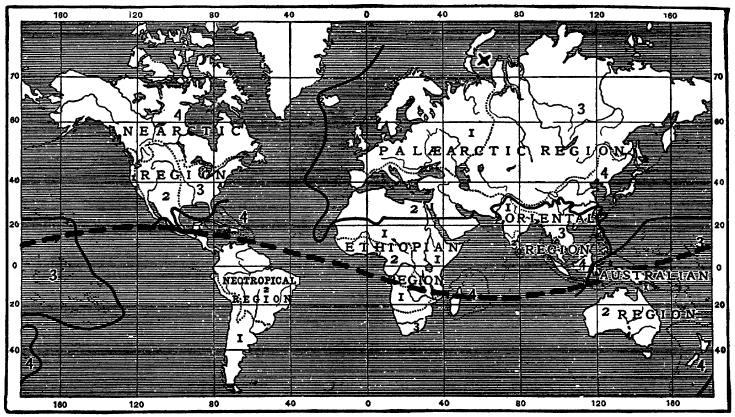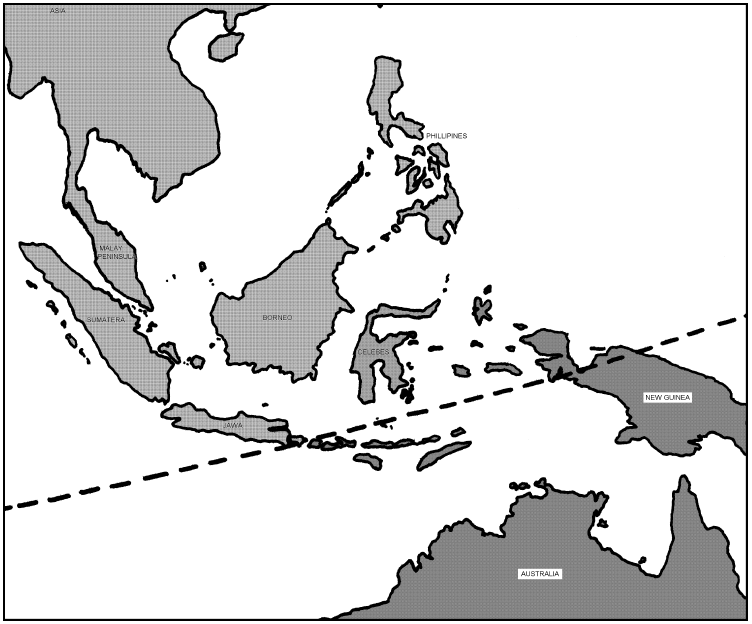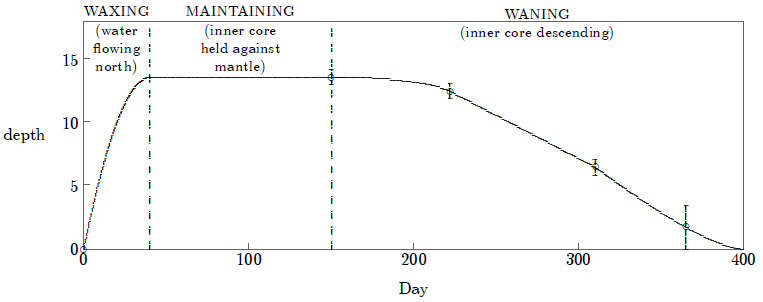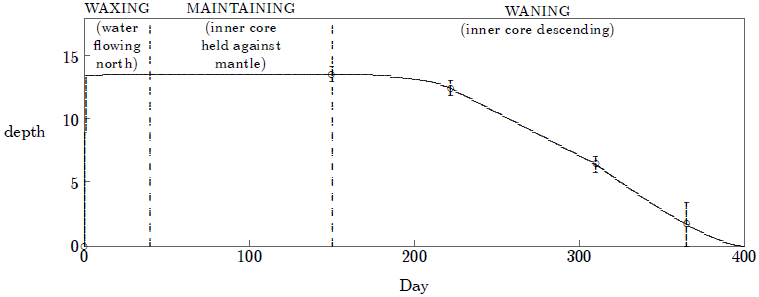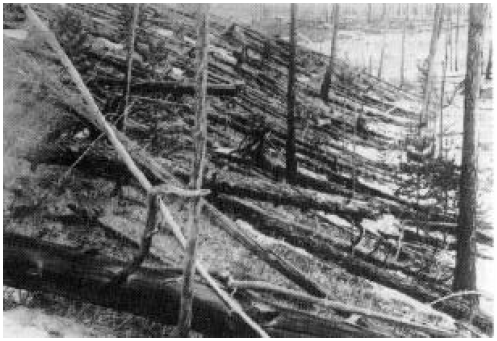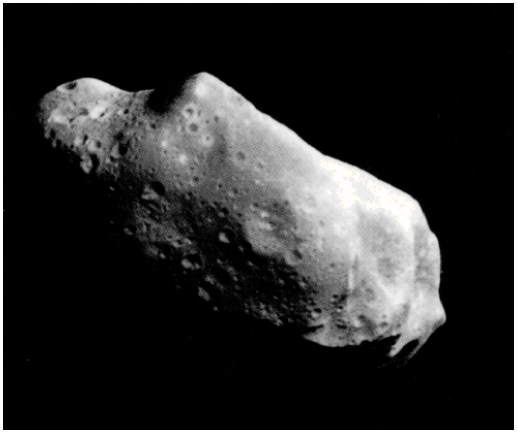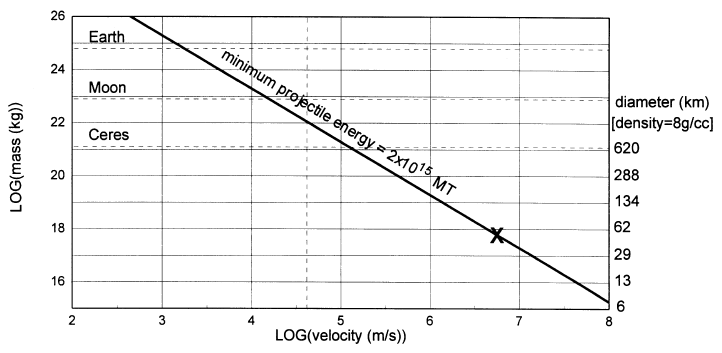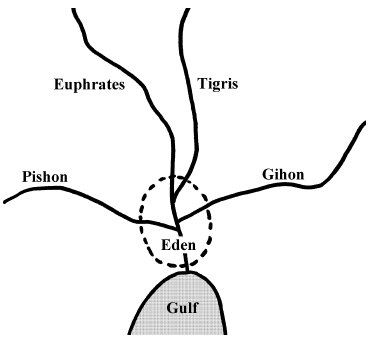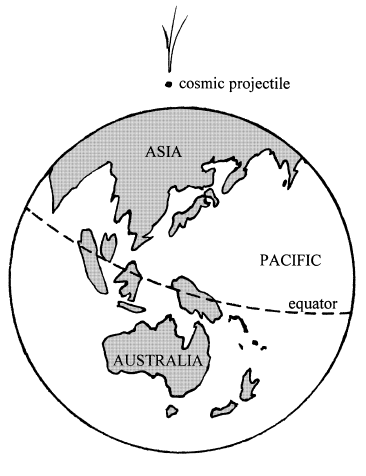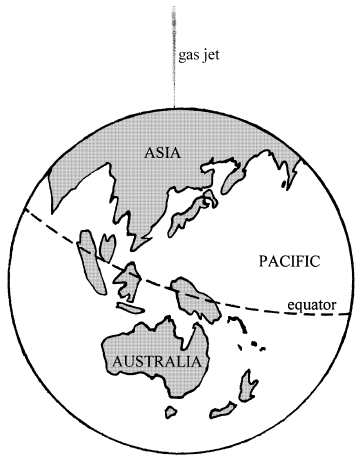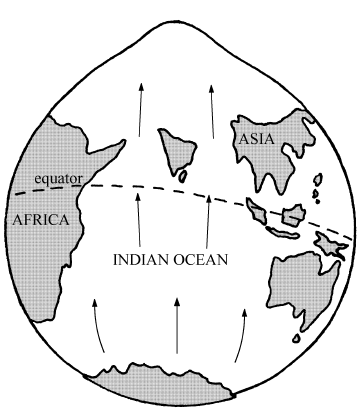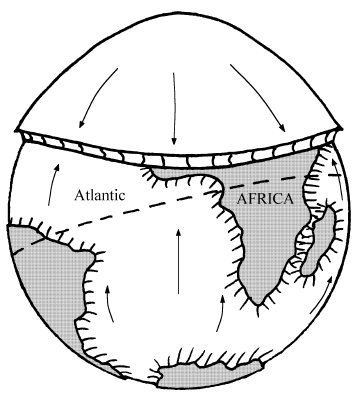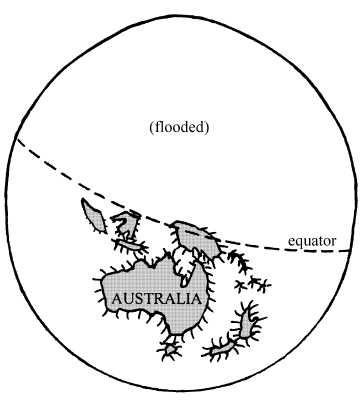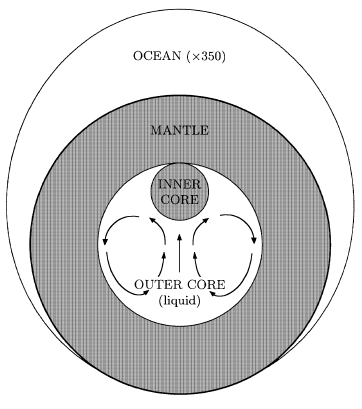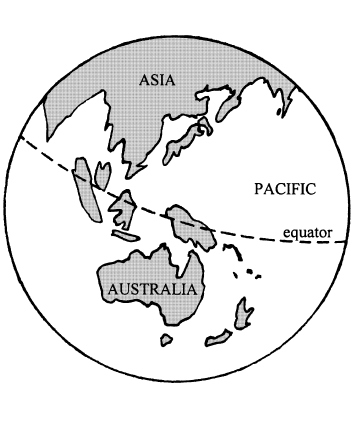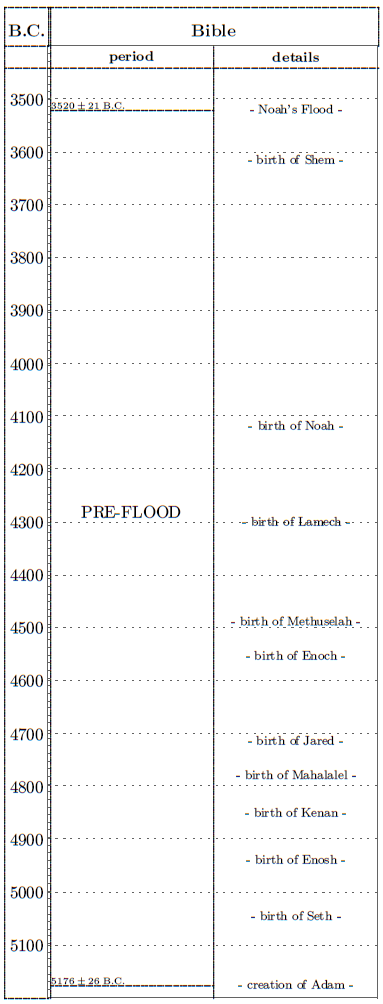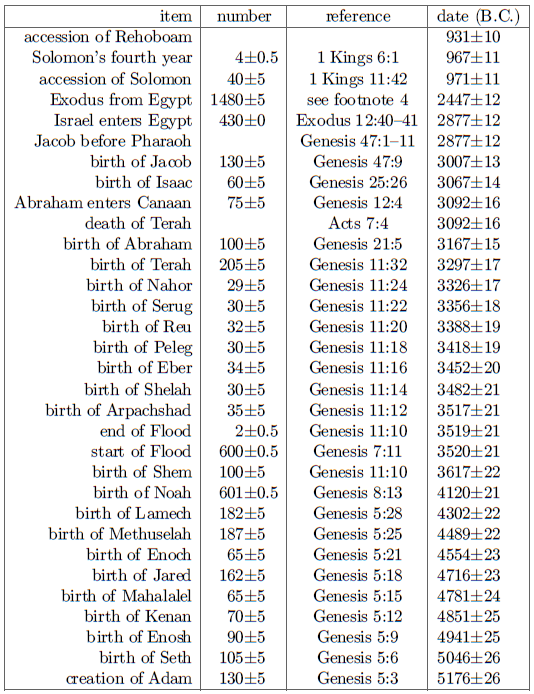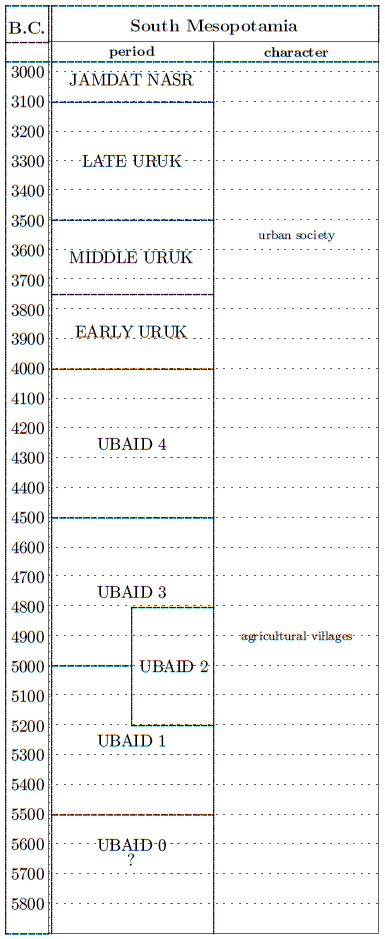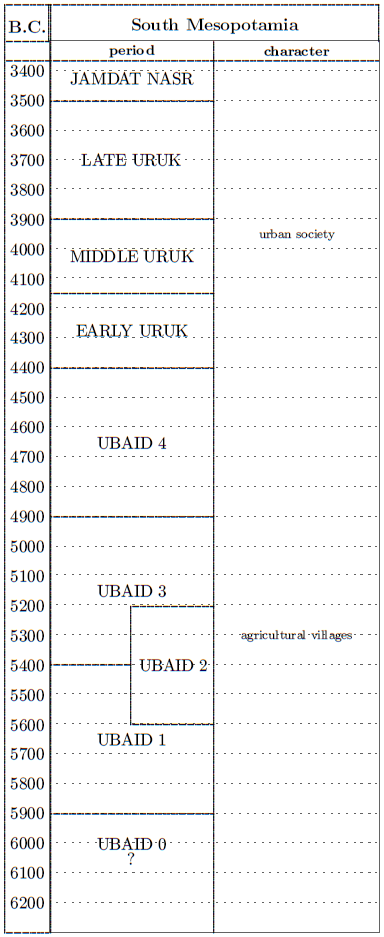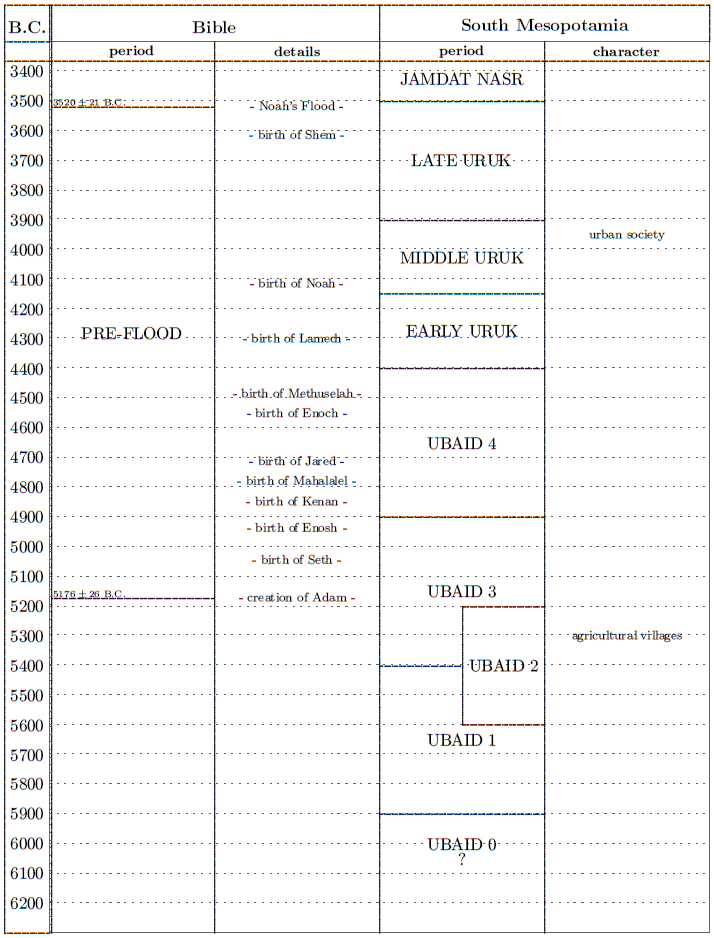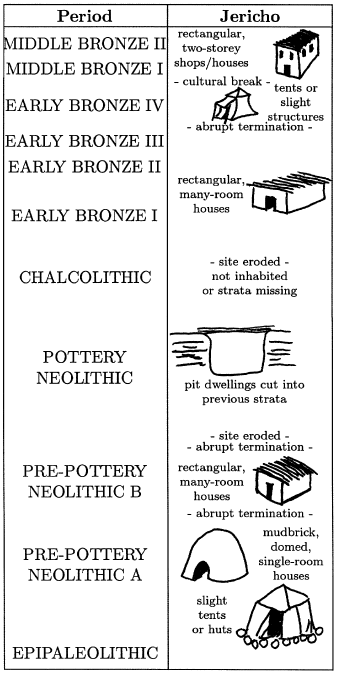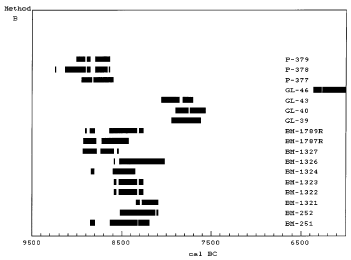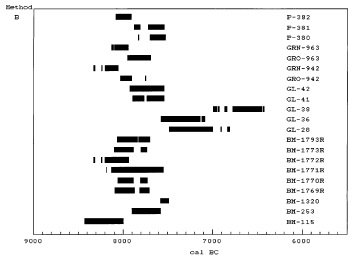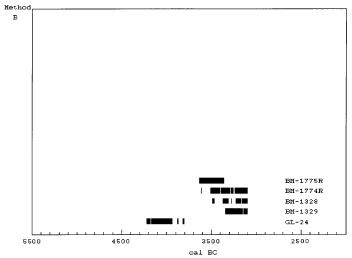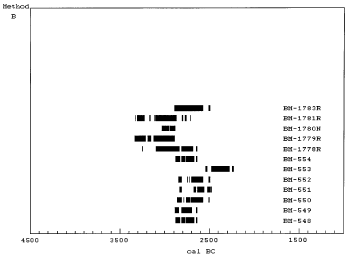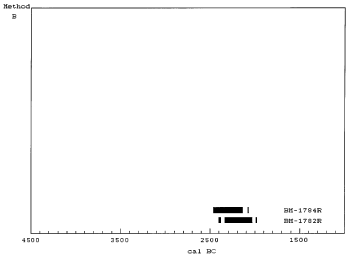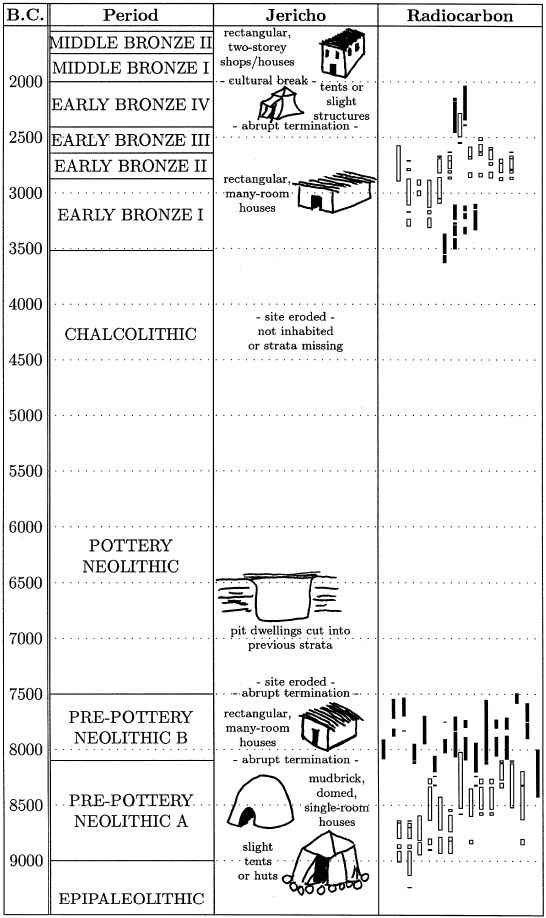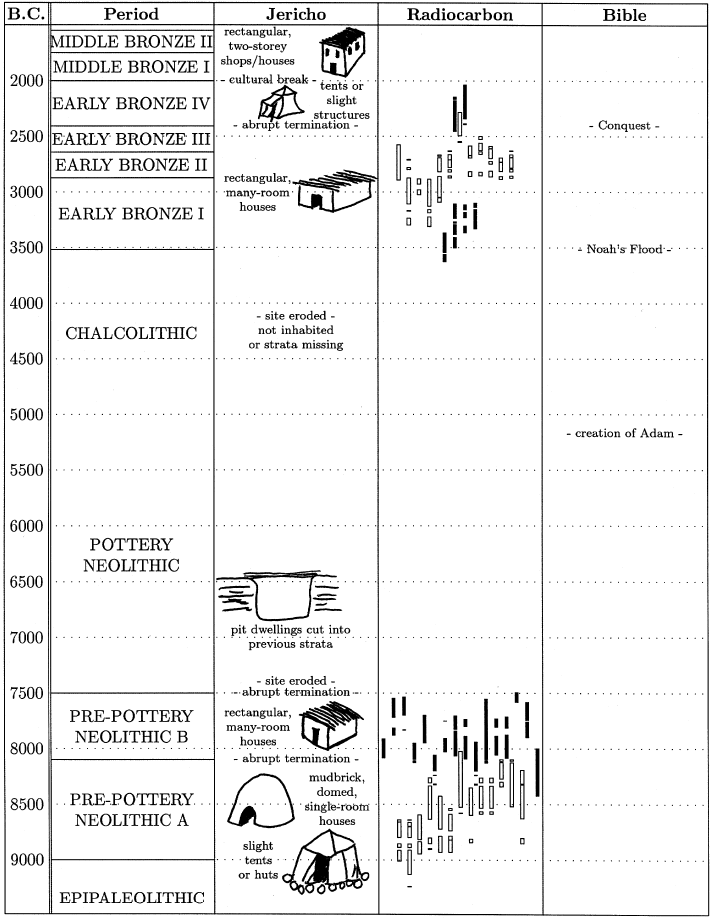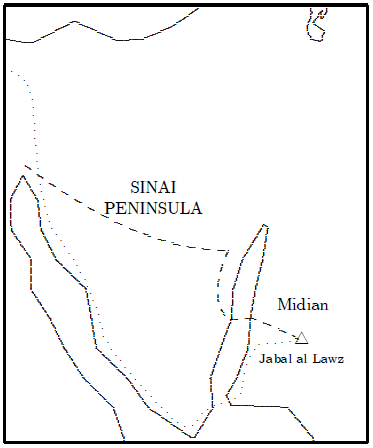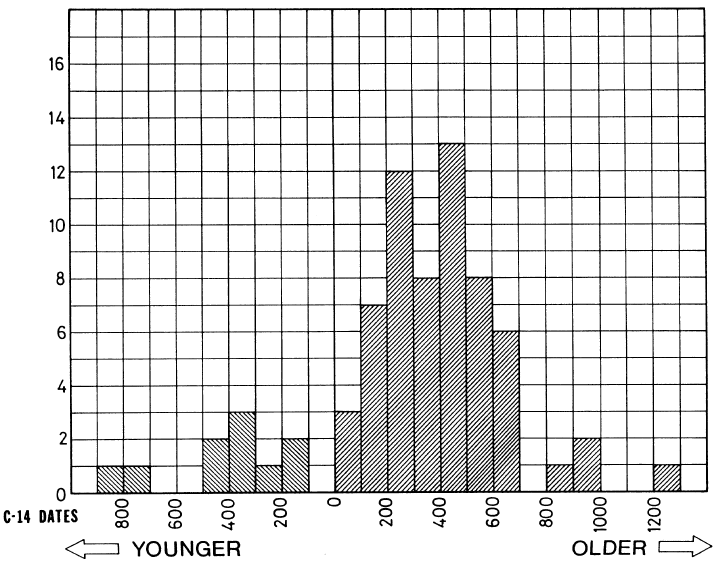 |
| Volume 4, Number 5 | September/October 1998 |
Toward Unification of Pre-Flood Chronology: Part II
We are presently embarked upon a mission to unify pre-Flood sacred and secular chronologies. This is neither a frivolous nor an easy task. It warrants our full attention and our best effort. It demands that we adopt a sound method of attack on the problem. And it demands that we proceed logically on the basis of available evidence, deliberately putting pet theories and prejudices aside, if we hope to obtain the truth.
We have tackled some very difficult chronology problems in this newsletter in the past. None has been as intrinsically difficult and as urgently in need of solution as this present one.
Review
Last issue I compared pre-Flood Biblical chronology with the secular chronology of South Mesopotamia.[1] I found the most recent point of divergence between these two chronologies to be at the creation of Adam, 5176±26 B.C. The divergence results from the fact that secular chronology finds mankind in existence thousands of years before this date, while we had expected Adam to be the first man ever created. I have called this the central conundrum of pre-Flood Biblical chronology. It is toward the solution of this conundrum that we must now direct our effort.
Possible Solutions
There are only nine conceptually possible solutions to this conundrum that I am able to find. My method of enumeration is as follows.
The conundrum exists between Biblical and secular accounts of earth history. Specifically, the secular antiquity of mankind seems to extend beyond the Biblical date of the creation of Adam. This gives rise to two categories of solution: 1. an error of some sort is being made on the Biblical side of the problem, or 2. an error of some sort is being made on the secular side of the problem.
These two categories each bifurcate according to whether the problem is chronological or historical in nature. For example, the conundrum could arise because of some sort of problem with the Biblical chronology of the creation of Adam (i.e., the date), or it could arise because of some sort of problem with the Biblical history regarding the creation of Adam (i.e., the details).
Each of these branches bifurcates again according to whether the problem is intrinsic or extrinsic. For example, the conundrum could arise because Biblical chronology is intrinsically false (i.e., the data are fabricated), or it could arise because we have made an error in our handling of the Biblical chronological data.
These three bifurcations give rise to eight (i.e., 23) conceptually possible solutions. The ninth possibility is that there is nothing wrong in either the Biblical or the secular side of the conundrum; the evidences from both sides are valid and require only proper integration. In this ninth possibility the problem is seen to lie in our profound ignorance of the nature of creation events, rather than in the data from the Bible or in the data from secular studies.
These nine possibilities are enumerated as follows:
The Biblical chronological data leading to the creation of Adam are false (i.e., fabricated).
The secular chronological data leading to a great antiquity for mankind are false (i.e., fabricated).
The Biblical history which teaches that Adam was the first man to be created is mythological or otherwise fabricated.
The modern secular teaching that mankind existed in remote antiquity is a hoax or fabrication.
We have misunderstood the Biblical history of the creation of Adam; the Bible does not really teach that Adam was the first man ever to be created.
The archaeologists have misunderstood the history of mankind; archaeology does not really show the existence of humans before Adam.
We have made some mistake in the computation of the Biblical date of the creation of Adam (i.e., the basic Biblical chronological data are valid, but they have been misunderstood).
The secular chronologists have made some mistake in their computation of the antiquity of man (i.e., the basic secular chronological data are valid, but they have been misunderstood).
The Biblical and secular evidences must both be accepted as legitimate; the truth lies in a proper synthesis of the two.
Our procedure must now be to work our way through this list, considering each of these possibilities in turn. Our purpose is to attempt to discover which of these nine solutions is most likely to be the correct one.
Are the Biblical Chronology Data Fabricated?
The first possibility is that the basic data from the Bible leading to the date of the creation of Adam are fabricated. That is, they have no basis in any real record of historical events. Rather, they have been fabricated more or less out of thin air.
This possibility encounters two principle difficulties. First, it is in violation of the doctrine of Biblical inerrancy. Second, the recent track record of this sort of claim is very poor.
The doctrine of Biblical inerrancy functions relative to the study of the Bible in much the same way as the law of mass/energy conservation functions relative to the study of the physical world. Both have proven to be guiding principles of no small merit, with the result that those who have experience with either are most reluctant to believe it will ever be shown false.
For example, in nuclear physics the discovery of beta decay led to an apparent violation of the scientific law of mass/energy conservation earlier in this century. Beta decay is one way that an atomic nucleus (the "parent") can spontaneously transform into an atomic nucleus of a different element (the "daughter"). In beta minus decay, an electron is ejected from the parent nucleus in the course of the transformation.
The apparent violation of mass/energy conservation resulted when it was found experimentally that the electrons for any given type of beta-decaying nucleus could be ejected with a whole range of energies. Since the parent and daughter each had a fixed mass/energy, then, according to the law of mass/energy conservation, the ejected electron should have had a fixed mass/energy too, exactly equal to the difference in mass/energy between the parent and the daughter.
The experimentally observed failure of the ejected electrons to have a fixed mass/energy could have been taken as a clear falsification of mass/energy conservation. But, shunning this possibility, Enrico Fermi proposed, in 1933, that the missing mass/energy was being carried away by yet another particle, emitted from the decaying nucleus together with the electron. To make this suggestion work, however, it was necessary to also propose that this additional particle was almost impossible to detect, since beta decay had been observed extensively in many laboratories, and no one had ever detected any additional particle.
To the novice, here was a contrived solution if there ever was one—a ghost particle that carried away the missing mass/energy but couldn't be detected. How very convenient!
But to those in the know, the law of mass/energy conservation is worth staking one's reputation on, no matter how improbable the proposal necessary to preserve it may seem. And, in point of fact, twenty-three years later Fermi's proposal was conclusively proven correct when the ghost particles were finally observed by Frederick Reines and Clyde L. Cowan, Jr. Today the neutrino—partner of the electron in beta decay—is a common-place, well-known entity of particle physics.
The doctrine of Biblical inerrancy is the same way. It has worked so well in such diverse instances, those in the know refuse to set it lightly aside no matter how pressing the evidence against it may seem to be.
In addition to this there is the fact that the proposal that the Biblical chronology data are fabricated has not been faring very well lately. This proposal has been around for quite some time, and it has been applied in many more contexts than just the creation of Adam. For example, over forty years ago archaeologist Kathleen Kenyon wrote in regard to the destruction of Jericho by Joshua:
we may take it in the first place that chronology based on the Biblical record cannot be taken literally.[2]
Kenyon believed the Biblical chronology data leading to a date for the conquest of Jericho were fabricated. As a result, she paid scant attention to them.
But I have shown that Kenyon was quite mistaken about this.[3] Indeed, we can only conclude that this fabrication hypothesis did Kenyon an enormous disservice. It caused her to fail in her attempt to find the Biblical city of Jericho which had been destroyed by Joshua at the time of the Conquest. The evidence was all there. She excavated it and handled it herself. She commented on how the walls had been subjected to a fierce conflagration by the attackers who had destroyed the city—just as the Bible tells us Joshua did to Jericho. But because she regarded Biblical chronology as fabricated, and therefore unworthy of serious study, she failed to make the critical connection between the evidence she held in her hands and the history of Jericho recorded in the Bible.
Not only is properly executed Biblical chronology literally correct in dating the conquest of Jericho, I have shown that it is also literally correct in dating the Exodus and numerous other Biblical events right back to and including Noah's Flood.[4] In each instance the Biblical data have proven reliable despite widespread insistence that they are not.
For these reasons I judge that the true solution of our conundrum will not be found to lie with the proposal that the Biblical chronology data leading to the date of the creation of Adam are fabricated.
Are the Secular Chronology Data Fabricated?
Absolute dating of archaeological artefacts is highly dependent on radiocarbon dating. Is it possible that the radiocarbon dates have been fabricated—that rather than being the result of real measurements on real archaeological samples from the archaeological contexts of interest, these "dates" have been pulled merely from thin air?
No, this is not possible. It is not possible because the archaeological artefacts to be dated are supplied by many different archaeologists from many different countries working independently at many different sites, and because the samples are submitted to many different radiocarbon laboratories all over the world. One can certainly imagine how situations might arise in which a given archaeologist might be tempted to pull a "radiocarbon date" out of thin air to support a pet theory, but it is impossible to imagine all archaeologists doing this, and even more impossible to imagine all radiocarbon labs going along with such a thing. In point of fact, I am well acquainted with a number of individuals who are intimately involved in dating samples using radiocarbon, and whatever their personal foibles, one cannot fault them along any such lines as these. They are devoted to making the most accurate physical measurement possible of the radiocarbon content of the samples submitted to them. They know full well, as do the archaeologists, that their claims can be checked by others, and very likely will be eventually, and it is a matter of professional pride for one's work to stand up to any amount of scrutiny. They also know that to be caught fabricating data means irreversible and quite possibly fatal damage to their professional careers.
The solution to our conundrum will not be found by waving the radiocarbon dates aside as so much fabrication. They are real—so real that you yourself would find the same result were you to make the measurement—and must be come to grips with as such.
Is the Biblical History False?
The next possibility—the idea that the Biblical account of the creation of Adam is simply mythological or otherwise false—is very prevalent at the present time. I reject this possibility for essentially the same reasons as the first possibility. That is, it violates Biblical inerrancy, and the recent track record of this sort of thinking is exceedingly poor, as nearly every issue of this newsletter has demonstrated since its inception.
I would only add here that this same sort of claim can be found historically in other than just Biblical contexts. For example, there was a time, not too long ago, when academic scholarship looked with distinguished disdain even upon the idea that the Troy of Homer's Iliad and Odyssey was a historical place. Skepticism, in this case, was snuffed out by the archaeological work of the self-educated Heinrich Schliemann in the closing decades of the last century, which work entirely revolutionized the accepted scholarly view of Greek history.
But the maxim that "the only thing we learn from history is that we never learn from history" seems, unfortunately, all too true in regard to scholars' general evaluation of the voice of the ancients from the past.
Is the Secular Teaching a Hoax?
The idea that the antiquity of man claimed by secular scholarship is a hoax can be dealt with relatively quickly. This falls into the category of conspiracy theory. The idea here is that the secular scholars have conspired to foist a view of the past which they know is false onto the unsuspecting public. They do this from evil motivations. Dissent within the ranks is essentially impossible because these evil-motivated scholars control the academic institutions, publishing houses, and granting agencies. They are easily able to snuff out all opposition before it ever really even gets going.
The problem with this theory is not that it characterizes scholars as motivated by evil. From what I have seen, many of them are! But the evil which motivates them is the ordinary, self-centered sort, and it is because of this fact that the theory fails. You only have to rub shoulders with these scholars for a short time to realize that any scheme, evil or otherwise, requiring that they cooperate is doomed to failure right from the start. Their pride would simply not allow it—they would each one claim the idea was originally theirs, and would each insist on being in charge of the whole operation. Nationalism, racism, sexism, and religious and anti-religious prejudices, always just beneath the surface of every gathering of scholars I have ever witnessed, would be sure to bring the whole scheme to ruin in short order.
Secular scholars from many different disciplines have been claiming a great antiquity for mankind for at least 100 years now. It is difficult to imagine a worldwide group of scientists successfully cooperating on anything voluntarily for even 100 days. That they should be able to do so for 100 years is simply preposterous.
The secular teaching that mankind existed long before the creation date of Adam cannot simply be dismissed as a gigantic, evil hoax.
Does the Bible Allow Mankind Before Adam?
This brings us to the fifth conceptually possible solution: that the Bible doesn't teach that Adam was the first man ever to be created.
The discussion of this possibility takes us out of the realm of science and into the realm of Biblical hermeneutics. Since my formal training is only in science I cannot give an "expert" opinion on this question. But the most striking fact one encounters relative to this question is the near-universal agreement among those Christians who accept that Adam was a real, historical person—including many who do qualify as experts in Biblical hermeneutics—that the Bible does indeed teach that Adam was the first man to be created. That being the case, I am hopeful that the following, somewhat lengthy discussion, which explains only why I think we must accept that the Bible does teach that Adam was the first man ever to be created, will suffice for the present purpose. I am hopeful that it will be found, if short of "expert", at least refreshingly original and stimulating.
To show conclusively from the Bible that Adam was the first man ever to be created is not the trivial exercise one might at first suppose. The prime difficulty is that the Genesis narrative of the creation of Adam never explicitly states that he was the first man to be created. One might imagine, for example, that other men had been created before Adam, but the Bible doesn't record these earlier instances. Just because the creation of Adam is the first to be recorded in Scripture does not guarantee that it was the first to ever have happened.
Mother of all living
I suspect that Genesis 3:20 figures prominently into the popular acceptance of the idea that Adam was the first man ever to be created. This says (NASB):
Now the man called his wife's name Eve, because she was the mother of all the living.
This is generally understood as establishing Eve as the first female ancestor of all mankind. And if Eve was the mother of all mankind, then Adam, her husband, must have been the father of all mankind. And in that case it is clear enough that Adam must have existed prior to all other men.
But a critical approach to this line of argument shows it to be quite frail. In the first place it is possible to argue that since Adam named his wife Eve while they were still living in the Garden and isolated from the rest of the world, he was unaware that other people existed outside the Garden, and so he thought Eve was the mother of all the living even though she really wasn't. In this view, Genesis 3:20 faithfully records what Adam named his wife and why he gave her that name, while never intending to imply that Adam's reason was correct.
But more cogent to me are difficulties with the verse itself. The verse seems curious in two ways, and until these can be satisfactorily explained, I am loathe to apply it to any problem for fear of inadvertent misapplication. This would not be the case if what this verse says was repeated elsewhere in Scripture, but, in fact, it stands alone.
The first curiosity with this verse is that it seems chronologically out of place in the narrative. It sits near the end of the account of the Fall, in the middle of God's judgment of Adam and Eve's sin. It seems an interruption of the flow of the narrative to be told what Adam named his wife and why he named her that at this point in the account.
It also seems unlikely that Adam would actually have named his wife at this point in the narrative. This is such a solemn, tragic moment, following God's pronouncement of their sentence. Would Adam have been occupied in naming his wife while God was making skin clothes for them and preparing to banish them from the Garden?
Second, the internal chronology of the verse does not seem right. We are told that Adam called her Eve "because she was the mother of all the living". The difficulty is that at this point in the narrative she was, in fact, the mother of no one. As far as the narrative tells us we have just Adam and Eve, and Eve has not yet had any children. Proper internal chronology seems to require a different wording, something like "because she was to be the mother of all the living". The wording which actually appears in the text seems only appropriate in a retrospective perspective, in which the writer is looking back across generations to the Garden. But this perspective is not that of the rest of the narrative, all of which seems to be taking place then and there. It is as if this explanation, "because she was the mother of all the living", is a scribal gloss which has become incorporated into the text, rather than being part of the original narrative.
In any event, both the external and internal chronology of the verse do seem to me to estrange it from the rest of the narrative. This is just another way of saying that I, at least, find this verse to be somewhat enigmatic. And since this is true, it seems necessary to exclude this verse from the present discussion, even though the sense in which it is normally understood is in agreement with my conclusion.
Aura of primacy
The idea that Adam was the first man created, though never explicitly stated in the narrative of the first few chapters of Genesis, is naturally inferred from it in several ways. Adam is the first human character to appear in the narrative, and there is an aura of primacy about his entrance into the narrative. He is created from the dust of the ground, rather than being generated by any human parents. One has the impression that he had to be thus created, precisely because there were no human parents around to produce him at that time. This impression is reinforced with the entrance of Eve into the narrative. One naturally infers that her creation from Adam's side was also not an arbitrary miracle, but rather a necessary one too, there being no other human females in existence at that time.
Test and see
The aura of primacy is further reinforced by the "test and see" character of the Genesis account of the creation of Adam. "Test and see" cases are natural to any invention which is the first of its kind; they have no natural setting with later duplicate copies of that same invention. We seem to be witnessing the initial "test flight" of the first human being as we watch God's interaction with Adam in the Garden.
The principle "test and see" case is the test of obedience posed by the tree of the knowledge of good and evil, of course. God has obviously given Adam free choice to eat or not to eat, and He is watching to see what the outcome of this test will be.
But this is not the only "test and see" episode which the narrative presents. Another one occurs with Adam's naming of the animals. Here the text is quite explicit that this is, indeed, a "test and see" case. Genesis 2:19 records, "And out of the ground the Lord God formed every beast of the field and every bird of the sky, and brought them to the man to see what he would call them; and whatever the man called a living creature, that was its name" [my emphasis].
Still another "test and see" case leads up to the creation of Eve.
Eve was not created simultaneously with the creation of Adam. Only after the passage of some time (presumably hours), during which Adam was alone in the Garden, was Eve finally created. One feels from the account (Genesis 2:18–24) that God has watched Adam to see his reaction to the world in his first several hours of existence, before concluding, "Yes, you see, he does indeed need a suitable companion."[5]
These "test and see" cases seem to place the reader in a setting of first-of-its-kind newness.
Note also that in this setting the narrative of Adam and Eve's creation finds deep meaning, while the idea that other humans had been previously created turns many aspects of the narrative from profound to trite. Yet it is the case that the narrative of the creation of Adam and Eve is always treated as pregnant with meaning in the New Testament, and never as trite or in any way eclipsed by a still earlier precedent.
A Textual Confusion Explained
In addition to these argument there is the fact that the idea that Adam was the first man ever to be created explains an otherwise curious confusion which appears in the Hebrew text. The Wycliffe Bible Encyclopedia explains the confusion:
In the OT the word 'adam is used more than 500 times in the sense of mankind as well as in the sense of a proper name. Both uses appear in the Genesis record, but only from Gen 4:25 onward can it definitely be claimed that the specific person Adam is exclusively under consideration.
As a single example, consider Genesis 5:1–3. Leaving the Hebrew 'adam as it appears in the untranslated text yields:
This is the book of the generations of 'adam. In the day when God created 'adam, He made him in the likeness of God. He created them male and female, and He blessed them and named them 'adam in the day when they were created. When 'adam had lived one hundred and thirty years, he became the father of a son in his own likeness, according to his image, and named him Seth.
That the intended sense is not always immediately obvious is easily illustrated by comparing different English translations of these sample verses. For example, the NASB translates two of these four instances of
'adam as Adam, one as man, and another as Man. The KJV translates three of them as Adam, and the other as man.
This confusion exists throughout the creation narrative of Genesis, not just in these few verses of Genesis 5.
This confusion must strike the uninitiated as very strange. Why should the concepts of "Adam", a specific creature, and "man", all creatures of Adam's class, be indistinguishable like this in Hebrew? And why would God allow a confusion of this sort to permeate something as foundational and important as these accounts of the Creation and the Fall in the early chapters of Genesis? Since so very much of faith, our understanding of the Bible and of God, and our understanding of man necessarily derives from these earliest chapters, one would hope for distinct clarity here if anywhere. There is, after all, the Hebrew word 'îsh, also translated "man" (e.g., Genesis 2:23) which might have been used to separate clearly between the concepts of "Adam" and "man" in each instance within the early chapters of Genesis. Why was such a duplicity of meaning allowed in these chapters, of all places?
The idea that Adam was the first man ever to be created provides an explanation of this curious apparent confusion. This lack of differentiation in vocabulary is expected in the case of there being only one specimen of a class of similar objects in existence.
Suppose for a moment that you were the owner of the only dog in the world. Then it would be perfectly understandable if you always referred to your dog simply as "Dog". If you said, "Dog, come here", there would be no confusion. The lack of differentiation in your vocabulary between your dog, "Dog", and the class of all creatures of the same type, "dog", would be entirely understandable in such a case. It would be a simple consequence of the fact that no such class of creatures of the same type existed.
Only in the case of there being two or more dogs in existence would it be necessary to provide some means of differentiating them. Only in that case would you need to increase your vocabulary from "Dog" to "Dog" and "Dog 2", or, if you had more of a flare for esthetics, perhaps "Rover" and "Spot".
I suggest that this lies at the root of the apparent confusion over this word 'adam in the early chapters of Genesis. These chapters, I suggest, provide a faithful witness to a time when no confusion resulted from a failure to separate between "Adam", the specific individual, and "man", the class of all such individuals, because Adam was then the only member of the class—the only man in existence.
1 Corinthians 15:45
These arguments fall short of proof positive because they are inferential. To settle the matter beyond all doubt, one really requires an explicit statement from Scripture saying directly that Adam was the first man ever to be created.
The closest Scripture comes to such a statement is in 1 Corinthians 15:45. There the apostle Paul writes [NASB. Small caps and italics are in the original. Small caps signify direct quote from the Old Testament. Italics signify word supplied by the translators.]:
So also it is written, "The first man, Adam, became a living soul." The last Adam became a life-giving spirit.
This verse does explicitly say that Adam was the first man. But, it does not explicitly say that Adam was the first man
ever to be created. This allows the possibility that "first man" might be interpreted in some other sense, such as "the first type of man". I think it is very common, in fact, for the "last Adam" of this verse to be interpreted as a reference to Christ, and such a figurative meaning for "last Adam" hardly favors a literal interpretation of "first man, Adam".
The figurative meaning for "last Adam" seems mandatory when this passage is read in the King James translation. This is because verse 47 is there rendered as, "The first man is of the earth, earthy: the second man is the Lord from heaven". This seems to show that Paul has a contrast between Adam and Christ in mind in these verses.
But verse 47 is rendered quite differently in the NASB. There we find simply, "The first man is from the earth, earthy; the second man is from heaven". This gives no hint of an analogy to Christ, which allows the possibility that the "last Adam" of verse 45 may not be intended figuratively at all. But a decision on this matter requires considerably greater expertise in New Testament textual issues than my training in science has afforded me.
There is another approach to this verse which does not seem to require great textual expertise, however, and which does seem to lead to the conclusion that this "first man, Adam" is intended to be understood in the sense of Adam being the first man ever to be created.
Notice that what Paul says "is written", in verse 45, is not an exact quote. The phrase, "man became a living soul", is all that is found in Genesis 2:7. To this has been added "the first" and "Adam" in verse 45, and yet Paul claims that all of this "is written". In what sense can it be said that the entire phrase, "the first man, Adam, became a living soul", "is written"?
The answer would seem to be that, while "the first" and "Adam" are not explicit in Genesis 2:7, the rest of what is written in the immediate vicinity of Genesis 2:7—the context of Genesis 2:7—clearly implies these additional words.
But if these additional words are implied by the context of Genesis 2:7—so that one may justifiably claim that they are "written" along with the rest of the phrase from Genesis 2:7—then it clearly must be the context of Genesis 2:7 which determines their meaning, and not the context of 1 Corinthians 15:45. And in that case it is perfectly clear that their meaning must be "the first man ever to be created" for Genesis 2:7 clearly sits within a creation context.
If we go back to Genesis 2:7 and put these extra words in there, as the Spirit explicitly warrants through 1 Corinthians 15:45, then we read:
Then the Lord God formed man of the dust of the ground, and breathed into his nostrils the breath of life; and the first man, Adam, became a living soul.
Here there can be no question. The context here is not analogy or typology. The context here is creation, plain and simple. And in that case we must conclude that the Bible does, in fact, teach both implicitly and explicitly that Adam was the first man ever to be created.
I judge that the Bible does require us to accept that Adam was the first man ever to be created. The resolution of our conundrum is not to be found in the idea that the Bible allows for the existence of mankind prior to Adam.
Are the Archaeologists Misreading the Data?
The sixth possibility is that the archaeologists are mistaken in their interpretation of the archaeological data. We are not thinking of chronology at all here (that comes in with the eighth possibility). For this possible solution the secular chronology is assumed to be valid. We are only thinking that the archaeologists are mistakenly identifying archaeological artefacts from pre-Adamic times as being related to human activity, when, in fact, they have nothing to do with humans.
One does not have to read very extensively in the archaeological literature to learn that this idea is impossible. The pre-Adamic archaeological artefacts are of the same sort as the post-Adamic ones. They include skeletal remains indistinguishable from modern man; painted pottery bowls, jugs, and plates; remains of houses which are nearly indistinguishable from even their modern counterparts in that same part of the world; houses arranged in village structure, frequently with a surrounding wall; animal and plant remains testifying to agricultural occupations; graves testifying to burial of the dead and belief in life after death; carved or molded statuettes; and much more. There can be no mistake about the fact that one is viewing truly human assemblages in these archaeological data. The solution to our conundrum does not lie in this direction.
Is Our Biblical Chronology Mistaken?
The seventh possibility is that we have made some mistake in the computation of the Biblical date of the creation of Adam. A simple quantitative analysis quickly reveals that our conundrum cannot be resolved in this way.
Secular chronology places the origin of modern mankind (i.e., the first Homo sapiens sapiens) very far back relative to seven thousand years ago. Skeletal remains anatomically indistinguishable from modern man, together with art work, and clear evidence of burial of the dead date back to at least 25,000 years ago on the secular time scale. (In fact, 35,000 years more accurately reflects the current secular estimate.) Thus, to resolve the conundrum of mankind before Adam by an appeal to a mistake in our handling of the Biblical chronological data, one or more errors totaling at least 18,000 years must be found.
I noted last issue that Biblical chronologists have been arriving at a date for the creation of Adam very similar to my 5176±26 B.C. (i.e., well within 10% of it) right back to the time of the early church. Thus, if this date is out by 18,000 years, a great number of competent, godly scholars have somehow been terribly misled through the years. But let us suppose that this, indeed, has happened, and press on with our quantitative analysis.
We have verified Biblical chronology from the present back to 3500 B.C., the time of Noah's Flood.[6] Thus, these 18,000 missing years must fit somewhere in the interval between Adam and Noah, an interval we have calculated to be just 1,700 years long. Quantitatively, then, we are required to somehow stretch the interval from Adam to Noah by more than a factor of ten over what we (and others) have previously calculated from the Bible. I judge this to be an impossibility.
This 1,700 years was calculated on the basis of the explicit chronological data given in the genealogical list from Adam to Noah found in Genesis 5. Thus, this 18,000 years must fit somewhere in this genealogical list. Said another way, this list must somehow be stretched by over a factor of ten.
Some have argued for missing generations in these genealogies, to be sure. But our quantitative analysis shows that we require more than ten missing generations for every one which is given in Genesis 5. That is a lot of missing data for a list which gives every impression of having been compiled with accurate chronological computation in mind.
The Genesis 5 list is very similar in construction to the one in Genesis 11 which extends the genealogy from Noah to Abraham. The Genesis 11 list was a vital part of our Biblical chronology computation of the date of the Flood. In that computation we assumed no missing generations. Since our Biblical date for the Flood checks with many extra-Biblical chronological indicators, our treatment of the Genesis 11 chronological data must be regarded as sound. This means that we have yet to find any chronological evidence of even one missing generation in Genesis 11. Is it, then, credible to propose that ten generations are missing for every one which is given in Genesis 5?
I am willing to concede that there may, in the most pathological case, be even as much as 500 years error in my computed date for the creation of Adam, as I have previously stated.[7] But the suggestion that this computation may be in error by 18,000 years is way outside the bounds of any reasonable analysis of the Genesis 5 chronological data. The apparent existence of mankind prior to the creation of Adam cannot be resolved in this way.
Recess
Only the eighth and ninth possible solutions remain:
The secular chronologists have made some mistake in their computation of the antiquity of man (i.e., the basic secular chronological data are valid, but they have been misunderstood).
The Biblical and secular evidences must both be accepted as legitimate; the truth lies in a proper synthesis of the two.
But these are both far too lengthy to undertake here. Stay tuned! ◇
Biblical Chronology 101
In its September 7, 1998 issue, Christianity Today ran the cover story "Did the Exodus Never Happen?" by Kevin D. Miller.[8] The byline reads: "How two Egyptologists are countering scholars who want to turn the Old Testament into myth".
I had mixed emotions when I learned that Christianity Today had run an article on Biblical archaeology in the period before the monarchy. A virtual information blackout has been the lot of the everyday Christian in regard to pre-monarchical Biblical archaeology ever since Kenyon overturned Garstang's conclusions at Jericho in the fifties. (In the thirties Garstang excavated at Jericho and claimed to have found the walls which fell before Joshua's army. This is where the Sunday-school story—still in circulation today—originates, about the archaeologists finding Jericho's walls fallen outward. But twenty years later, when the science of archaeology had progressed considerably, Kenyon carried out her own excavation at Jericho and showed that the walls Garstang had found dated much earlier than he had supposed.) The result has been a generation of Christians who view Old Testament history as divine fairy-tale—wonderful, inspiring stories, absolutely heavenly true, and blissfully detached from anything in the real world such as history, geography, or even archaeology. So, on the one hand, I was pleased to find Christianity Today exhibiting the courage to break the silence at long last.
But on the other hand, I was worried. The truth is that mainline conservative Biblical archaeology is in a mess in the pre-monarchical period. The conservative archaeologists were soundly defeated at Jericho in the fifties, and the progress of the war has been all downhill from there.
Now if you have been following the results of my research over the past several years, you know that the defeat at Jericho results from mistaken chronology.[9] There is a thousand years missing from traditional Biblical chronology just prior to 1000 B.C., with the result that the traditional Biblical date for the destruction of Jericho (and everything else prior to the book of 1 Samuel) is 1000 years too recent. If you look for a destruction layer in an archaeological mound a full millennium later on (i.e., higher up in the archaeological strata) than the destruction happened, you are most unlikely to find what you are looking for, and you are likely to come away with the conclusion that the destruction never happened. Which is precisely what has happened at Jericho.
It is unequivocably the case that if you look in the mound of ancient Jericho exactly 1000 years earlier than traditional expectations tell you to look, you find a destruction layer which matches the Biblical description of the conquest of Jericho to the letter. In fact, one of the walls which Garstang identified as having been the Biblical wall (he thought he had found a double wall at the time of Joshua, but the second wall of this double wall idea is from an earlier period still, showing that it is unrelated to the first wall) is the wall belonging to this 1000 year earlier, destroyed and burned with fire (as the Bible says), city. So Garstang was at least partly right (and Kenyon partly wrong). So, as I began to say two paragraphs ago, if you have been following my research, you know that the archaeological defeat at Jericho was hardly the blow to conservative Christianity that many have subsequently supposed.
But mainline conservative Biblical archaeology doesn't know this—despite my best efforts. Attrition has had an awful effect on the conservative archaeological army since Jericho, and a few old soldiers, together with a leavening of younger, starry-eyed recruits is all that remains of this once grand army. As you might guess, this tattered remnant is in an extremely defensive mood. Indeed, they are shooting at anything which moves. Which makes them a little difficult to communicate with.
So, on the other hand, as I began to say four paragraphs ago, I was more than a little worried about the content of the article. To be honest, I feared the author, Kevin D. Miller, might have put together a dreadful piece of propaganda. For I doubt seriously that Beethoven himself would be able to extract any real melody from the desperate cacophony which is mainline conservative Biblical archaeology in the pre-monarchical period today.
So I was much relieved to find that Kevin Miller simply opted to present the cacophony. This option may not provide the audience with greatest listening pleasure, but at least it is high fidelity.
The article is an accurate reflection of the current state of mainline conservative scholarship within the pre-monarchical period of Old Testament history. It bears no explicit message (unless, perhaps, a "reassurance" that we still have some soldiers in the field) and displays numerous duplicities. This is as it should be, for it is a fact that mainline conservative Biblical scholarship in this early period of Old Testament history has no explicit message to deliver (the only honest thing it could say at this point is that it has been routed and is in a state of complete disarray, but it is, understandably, unwilling to make this admission), and that it is currently characterized by (perfectly understandable, but unfortunate nonetheless) duplicities.
Unfortunately, the duplicities are somewhat beneath the surface in the article. While this also accurately reflects the state of the field, I am concerned that many of the article's less sophisticated readers may come away from it feeling somewhat confused. In what follows I assume the role of the unsophisticated churchman and attempt to give his confusion a voice.
Who are the bad guys?
The byline (recall: "How two Egyptologists are countering scholars who want to turn the Old Testament into myth") clearly establishes a good-guy/bad-guy framework for the article. This byline informs us that there are two good guys, and that the bad guys are "scholars who want to turn the Old Testament into myth". As we begin reading the article we quickly learn that the bad guys are the "biblical minimalists", while the good guys are "Kenneth Kitchen, James Hoffmeier, and a handful of others". This much I follow.
But then we are introduced to a debate which took place between two biblical minimalists, Niels Peter Lemche and Thomas Thompson, and two other scholars, William Dever and P. Kyle McCarter. It is perfectly clear that Lemche and Thompson are bad guys, because they are clearly identified as biblical minimalists. It is over the proper category for Dever and McCarter that confusion arises.
Since Dever and McCarter are taking on the bad guys in the debate, presumably they are good guys—two of the "handful of others" who, like good-guys Kitchen and Hoffmeier, are "countering scholars who want to turn the Old Testament into myth". But then we find Dever being quoted in the article as saying,[10]
I agree with you that [the Book of] Joshua has little to do with any historical events… If you guys think I—or the Israeli archaeologists—am looking for the Israelite conquest archaeologically, you're wrong. We've given that up. We've given up the patriarchs. … Tom, I don't care in the least whether Solomon ever existed. I'm probably more of a disbeliever than you. I don't really care about the tradition. I don't believe any of the myths.
Someone help me—is Dever a good guy or a bad guy? I thought it was the
bad guys who wanted "to turn the Old Testament into myth"?
Why are the good guys having such a rough time these days?
The article early on tells us a happy story of William Foxwell Albright's conversion from skepticism to belief. (Albright was an archaeological heavyweight roughly two generations ago.) The story we are told is how Albright was predisposed to disbelieve the Biblical account of the history of Israel because of certain destructive theories about how the Bible had come to be, which were rampant at the time he was a student in training. But when he got out into the field in Palestine, and began to dig up the past for himself, the hard evidence from the ground soon caused him to change his mind.
Later on in the article, however, we are told that the reason things aren't nearly so happy in the field of Biblical archaeology today is because of "the hermeneutics of suspicion". This dread philosophical blight, we are informed, seizes the minds of modern archaeologists, causing them to adopt a "guilty until proven innocent" approach toward Biblical history—in sharp contrast to scholars of Albright's generation, we are told, who held the Bible to be "innocent until proven guilty".[11]
Now I hope you all find this as confusing as I do, and that I am not just missing something here. Because I thought the Albright conversion story was cast in a setting of a whole generation of scholars who had concluded the Bible was guilty before they ever bothered to look at the archaeological evidence because of some silly theories about the Bible. Indeed, I thought the whole conversion story was about a young scholar who was infested with this "guilty until proven innocent" disease until the evidence from the ground whipped it out of him. Now which is it? Did Albright and the scholars of his generation assume the Bible was "innocent until proven guilty" or "guilty until proven innocent"?
Why, really, are the good guys having such a rough time getting other scholars to buy what they are saying these days?
What do the good guys do?
Still another duplicity arises over the matter of what it is that good guys do. The bad guys, we know, try "to turn the Old Testament into myth". So the good guys, we would suppose, uphold the historicity of the Old Testament, against all odds—as one expects good guys to do.
This deduction does seem to be borne out early in the article when the good guys are introduced:[12]
But before anyone scribbles "Fiction" over the title page of the Old Testament, some scholars want to tell another side to the story, one that Kenneth Kitchen, James Hoffmeier, and a handful of others are meticulously piecing together.
This is as expected. This makes it perfectly clear what the bad guys do and what the good guys do. The bad guys write "fiction" on the Old Testament. The good guys write "fact" there.
But as we continue to read the article this all begins to unravel. For example, the bad guys, the article informs us, think the account of the Exodus is fictional because, among other things, the whole idea of "a million-plus runaway slaves traversing a desert" is to them incredible. It seems they could handle a thousand, or maybe even ten-thousand, but a million is just too big a number. So the bad guys write "fiction" over the Biblical record of "a million-plus runaway slaves traversing a desert". Fair enough. That's what bad guys do, of course.
But we are not alarmed when the bad guys do this, because we know that good-guys Kitchen and Hoffmeier and a handful of others are there to write "fact" over this matter of "a million-plus runaway slaves". Indeed, we have read our Bibles, and we know that the bad guys are in for a hard time from our good guys on this particular issue. For if ever the Bible provided unambiguous support for the factuality of a Biblical number, this, we know, is the case.
Exodus 12:37 says point blank, "Now the sons of Israel journeyed from Rameses to Succoth, about six hundred thousand men on foot, aside from children". (Even adding one child for each man will bring the total to "a million-plus".)
But this 600,000 figure is not just found in Exodus 12:37. In Exodus 38:26, in context of the financing of the building of the tabernacle, we find a more precise numbering, of "603,550 men".
Then, in Numbers 1:45,46 we find, "So all the numbered men of the sons of Israel by their fathers' households, from twenty years old and upward, whoever was able to go out to war in Israel, even all the numbered men were 603,550."
Then in Numbers 2:32 we read, "These are the numbered men of the sons of Israel by their fathers' households; the total of the numbered men of the camps by their armies, 603,550."
Then, if that is not enough, in Numbers 11:21,22 we find, "But Moses said, "The people among whom I am, are 600,000 on foot; yet Thou hast said, 'I will give them meat in order that they may eat for a whole month. Should flocks and herds be slaughtered for them, to be sufficient for them? Or shall all the fish of the sea be gathered together for them, to be sufficient for them?"
And, to add to the heap, in Numbers 26:51 we read, "These are those who were numbered of the sons of Israel, 601,730."
But the Biblical evidence of the integrity and perspicuity of this number doesn't stop there. In Numbers 1 and again in Numbers 2 we find this number broken down into its component parts according to the twelve tribes; the number of men in each tribe being given separately, and the sum of these twelve numbers being 603,550.
Finally, the same procedure of numbering by tribe is carried out with the new generation in Numbers 26. The twelve individual numbers in this case sum to the 601,730 of Numbers 26:51, mentioned above.
So if ever the Bible has given our good guys a basis for standing firm, and boldly declaring "fact", this is it. Writing "fact" on the Old Testament is what good guys do, and we can expect our good guys to do so here if anywhere.
But what is this?
If it seems incredible to believe that 600,000 men plus women and children could have survived as a people in the Sinai wilderness for 40 years, we may be misinterpreting the number, says Hoffmeier [my emphasis].[13]
Whoa a minute. The article told us up front that Hoffmeier was a good guy. I thought the thing good guys did was to write "fact" on the Old Testament.
"The issue of Exodus 12:37 is an interpretive one," says Hoffmeier. "The Hebrew word eleph can be translated 'thousand,' but it is also rendered in the Bible as 'clans' and 'military units.' When I look at the question as an Egyptologist, I know that there are thought to have been 20,000 in the entire Egyptian army at the height of Egypt's empire. And at the battle of Ai in Joshua 7, there was a severe military setback when 36 troops were killed. If you have an army of 600,000, that's not a big setback." In other words, the head count may have been far fewer than suggested by a literal reading of Exodus 12:37.[14]
Now I'm really confused.
Look. The Bible is certainly clear that the defeat at Ai was a major military setback for Israel, and it is equally clear that only about 36 men were lost. But it does not for a moment intimate that the loss of the 36 men was why the defeat was a major military setback. The fact that this defeat was a major military setback did not rest in the number of Israelite soldiers who were killed; it rested rather in the fact that the Israelites had for the first time in roughly forty years been defeated! The military setback was that they would, from this time forward, no longer appear invincible to their enemies. The setback was in the psychological impact the news that Israel and its conquering God had lost a battle would have on the enemy nations. The defeat at Ai gave the enemy every reason to take courage, join forces, and wipe out the entire nation of Israel. This is so very clear, one wonders how anybody versed in the text could possibly fail to understand it:
Then Joshua tore his clothes and fell to the earth before the ark of the Lord… And Joshua said, … "Oh Lord, what can I say since Israel has turned their back before their enemies? For the Canaanites and all the inhabitants of the land will hear of it, and they will surround us and cut off our name from the earth. And what wilt Thou do for Thy great name?[15]
But why am I having to explain the Bible to the good guys? I thought these were our heroes—the ones who understood, believed, and wrote "fact" over the Old Testament!
Somebody help me here—my pulse is racing, and I fear my logical faculties may be clouded by emotion at the moment. Tell us what it is the good guys do.
Who is winning, the good guys or the bad guys?
One more duplicity, and then I'll be done.
Who is winning, the good guys or the bad guys?
We learn early on in the article that the bad guys are making some impressive progress:[16]
As far-out as their pronouncements may sound, their work is filtering its way into our world through seminary textbooks and media soundbites. The effect is a wholesale rejection of the Bible's accounts of Israel's origins—a matter of no small concern to believing Jews and Christians.
But we have been assured in the byline that the two good guys are "countering" these bad guys. And, we are told, they are doing so, "through top university presses and in academic conferences".[17] So one gets the impression that our two good guys are valiantly battering back the forces of evil on the field of battle.
The bulk of the article seems certainly calculated to add to this impression, as we struggle through more than four pages of bulleted arguments from the good guys.
But when the last shot has been fired, one still feels a strange sense of uneasiness. Yes, the good guys have made a lot of noise with their canonry, and there's no denying they've produced a powerful lot of smoke, but one still wonders whether they've hit anything. After all, it is a simple matter of observation that, while the good guys have been entrenched along these same basic lines for several decades now, the bad guys' work seems to be "filtering its way into our world" just the same, and at a steadily increasing pace at that.
And the ending of the article certainly doesn't seem to leave us in possession of the high ground. We are advised by good-guys Hoffmeier and Kitchen to patiently keep our heads down in our foxholes—to "wait and see".
But can we afford to "wait and see"? It is difficult not to notice that we have been playing this "wait and see" game for forty years now, and the only result so far is that the bad guys are swarming the field, their ranks bulging, while our entire fighting force is down to two good guys "and a handful of others".
Now if the best that Christians can do is "wait and see", while the bad guys' stuff continues "filtering its way into our world", and while our troops are all but petered out due to defection and old age, who, then, is really winning this battle?
Epilogue
Not too long ago I ran across an article with the title "Cranks, Crackpots, and Charlatans" in a conservative Biblical archaeology newsletter. The purpose of the article was to keep the faithful from straying from the old mainline conservative position.[18] Its keynote, in regard to other views, was, "if it looks too good to be true, it probably is". I thought the author's time would have been better spent with a more introspective theme. For the question which is begging an honest answer of the old mainline conservative position today is: if it looks too bad to be true, what then? ◇
The Biblical Chronologist is a bimonthly subscription newsletter about Biblical chronology. It is written and edited by Gerald E. Aardsma, a Ph.D. scientist (nuclear physics) with special background in radioisotopic dating methods such as radiocarbon. The Biblical Chronologist has a threefold purpose: to encourage, enrich, and strengthen the faith of conservative Christians through instruction in Biblical chronology, to foster informed, up-to-date, scholarly research in this vital field within the conservative Christian community, and to communicate current developments and discoveries in Biblical chronology in an easily understood manner.
An introductory packet containing three sample issues and a subscription order form is available for $9.95 US regardless of destination address. Send check or money order in US funds and request the "Intro Pack."
The Biblical Chronologist (ISSN 1081-762X) is published six times a year by Aardsma Research & Publishing, 412 N Mulberry, Loda, IL 60948-9651. Copyright © 1998 by Aardsma Research & Publishing. Photocopying or reproduction strictly prohibited without written permission from the publisher. |
Footnotes
^ Gerald E. Aardsma, "Toward Unification of Pre-Flood Chronology," The Biblical Chronologist 4.4 (July/August 1998): 1–10.
^ Kathleen M. Kenyon, Digging Up Jericho, (New York: Frederick A. Praeger, 1957), 258.
^ Gerald E. Aardsma, A New Approach to the Chronology of Biblical History from Abraham to Samuel, 2nd ed. (Loda IL: Aardsma Research and Publishing, 1993), 86–90.
^ See Gerald E. Aardsma, A New Approach to the Chronology of Biblical History from Abraham to Samuel, 2nd ed. (Loda IL: Aardsma Research and Publishing, 1993) and the previous issues of this newsletter.
^ I trust my failure to overlay the simplicity of the text at this point in the discussion with theological concepts of God's omniscience and sovereignty will not seem intolerable to the theologians. My reason for failing to do so is that the text itself seems deliberately void of these concepts at this point.
^ Gerald E. Aardsma, "Noah's Flood at Elk Lake," The Biblical Chronologist 2.6 (November/December 1996): 1–13. Gerald E. Aardsma, "Noah's Flood at Devon Island," The Biblical Chronologist 3.4 (July/August 1997): 1–16. Gerald E. Aardsma, "Radiocarbon Dating Noah's Flood," The Biblical Chronologist 3.6 (November/December 1997): 1–11.
^ Gerald E. Aardsma, "Toward Unification of Pre-Flood Chronology," The Biblical Chronologist 4.4 (July/August 1998): 4.
^ Kevin D. Miller, "Did the Exodus Never Happen?" Christianity Today (September 7, 1998): 44–51.
^ Gerald E. Aardsma, A New Approach to the Chronology of Biblical History from Abraham to Samuel, 2nd ed. (Loda IL: Aardsma Research and Publishing, 1993).
^ Kevin D. Miller, "Did the Exodus Never Happen?" Christianity Today (September 7, 1998): 46.
^ Kevin D. Miller, "Did the Exodus Never Happen?" Christianity Today (September 7, 1998): 46.
^ Kevin D. Miller, "Did the Exodus Never Happen?" Christianity Today (September 7, 1998): 44.
^ Kevin D. Miller, "Did the Exodus Never Happen?" Christianity Today (September 7, 1998): 48.
^ Kevin D. Miller, "Did the Exodus Never Happen?" Christianity Today (September 7, 1998): 48.
^ Joshua 7:9.
^ Kevin D. Miller, "Did the Exodus Never Happen?" Christianity Today (September 7, 1998): 44.
^ Kevin D. Miller, "Did the Exodus Never Happen?" Christianity Today (September 7, 1998): 45.
^ Charles F. Aling, "Cranks, Crackpots, and Charlatans" Artifax 12.3 (Summer 1998): 26–27.


